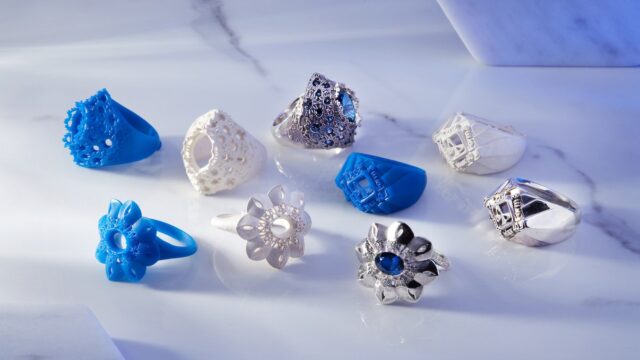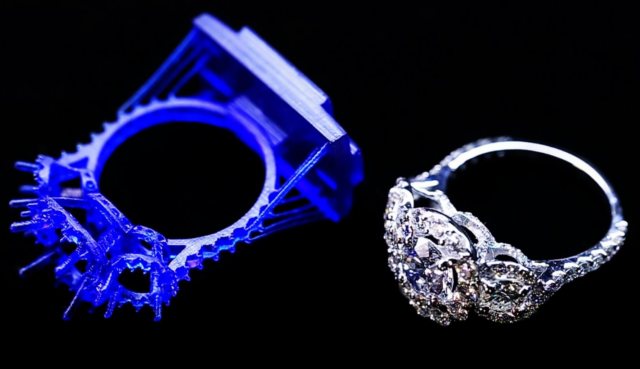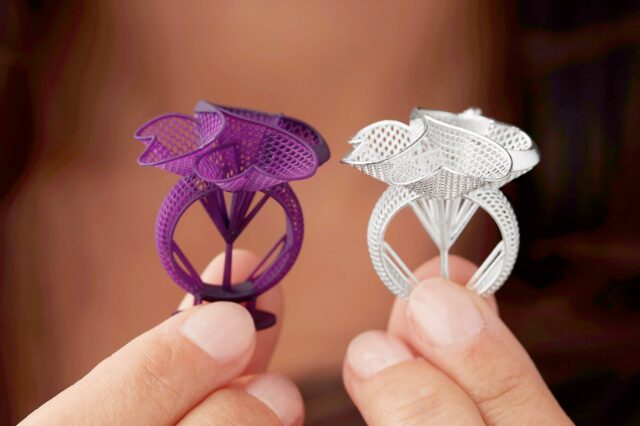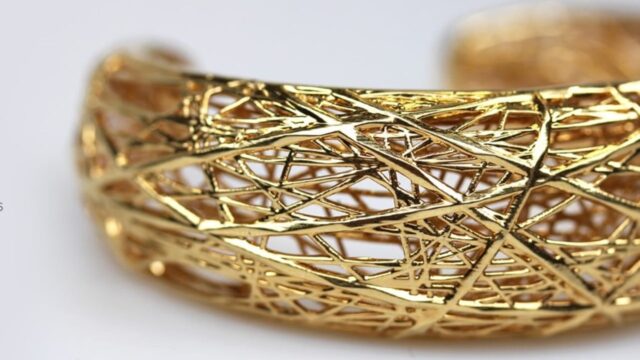3D printing is a rapidly growing technology that is revolutionizing many industries, including the jewelry industry. The engagement ring industry, in particular, has benefited greatly from the advancements made in 3D printing technology.
In this article, we will explore how 3D printing is changing the way engagement rings are produced and designed, and its potential impact on the industry.
Introduction to 3D Printing and Its Role in the Jewelry Industry
3D printing, also known as additive manufacturing, is a process of creating three-dimensional objects from a digital file by layering materials one on top of the other.
This technology has been around for several decades, but it is only in recent years that it has become widely accessible and affordable. The jewelry industry has been quick to adopt this technology as it provides many benefits over traditional methods of jewelry making.
Advantages of 3D Printing in Engagement Ring Production

One of the biggest advantages of 3D printing in engagement ring production is the ability to produce highly detailed and intricate designs. With traditional methods, it can be difficult to create complex designs that require multiple steps and techniques.
However, with it, designers can create highly complex designs with ease. This allows for a greater range of designs to be produced, which can be especially useful for engagement rings as couples often want something unique and personal.
Design Freedom and Customization Options for Engagement Rings
Another advantage of 3D printing is the design freedom it provides. Traditional jewelry-making methods can be limiting when it comes to design as there are certain limitations to what can be achieved with the tools and materials available.
With 3D printing, designers have the freedom to create any design they can imagine, regardless of how complex it may be. This allows for a greater range of customization options for engagement rings, which can be tailored to the specific tastes and preferences of the couple.
One great example is how 3D printing has impacted the engagement rings London industry. With so many bespoke jewelers in London, this has allowed many small and independent jewelers to offer a greater range of customization options to their customers.
From unique gemstone arrangements to intricate engraving, the possibilities are endless when it comes to designing a bespoke engagement ring in London.
The Role of Traditional Jewelry-Making Techniques in the Age of 3D Printing

While 3D printing is undoubtedly transforming the engagement ring industry, it is important to note that traditional jewelry-making techniques still have a role to play in the industry. Many jewelers continue to use traditional methods, such as handcrafting and casting, alongside 3D printing to create their pieces.
These techniques can add a unique touch to the final product that cannot be achieved through 3D printing alone.
Handcrafting, for example, allows for a level of intricacy and detail that is difficult to achieve with 3D printing. The art of handcrafting has been passed down for generations and is often associated with luxury and high-end jewelry.
Casting, on the other hand, involves creating a mold of the design and pouring molten metal into it. This technique can be used in conjunction with 3D printing, with the printed model serving as the original design for the mold.
While 3D printing has many benefits, it is important to acknowledge the role that traditional techniques have played in the jewelry industry and continue to play.
Many jewelers combine both traditional and modern methods in their production processes to create truly unique and high-quality pieces. Many bespoke jewelers are known for their use of traditional techniques in combination with 3D printing to create stunning and unique engagement rings.
Cost-Effective Production and Reduced Wastage in 3D Printing

Another advantage of 3D printing in engagement ring production is that it is often more cost-effective than traditional methods. With traditional methods, there can be a lot of wastage as materials are cut and shaped to create the final piece.
However, with it, materials are used more efficiently, resulting in less wastage and a lower production cost. This can be especially useful for engagement rings, which can be expensive to produce using traditional methods.
Sustainability and Ethical Implications of 3D Printing in Engagement Rings
In addition to the cost and design benefits of 3D printing, there are also ethical and sustainability implications to consider.
Traditional jewelry-making methods can be harmful to the environment and can be associated with unethical practices such as conflict mining. 3D printing can help to reduce the environmental impact of jewelry production and eliminate the need for unethical practices such as mining.
As such, it is a more sustainable and ethical option for engagement ring production.
Potential Future Developments and Impacts of 3D Printing in the Jewelry Industry

As 3D printing technology continues to evolve and improve, there is no doubt that it will have a significant impact on the jewelry industry.
In the future, it is possible that 3D printing will become the norm for engagement ring production, especially as the technology becomes more affordable and accessible. This will likely result in a greater range of customization options and designs for engagement rings.
Moreover, 3D printing is also helping to drive innovation in the jewelry industry. The ability to offer a greater range of customization options is attracting more customers to bespoke jewelers and 3D printing is enabling smaller businesses to compete with larger retailers in the industry.
Looking ahead, it is clear that 3D printing will continue to have a significant impact on the jewelry industry. As the technology improves and becomes more accessible, it is likely that more jewelers will adopt 3D printing in their production processes.
This will lead to greater competition in the industry, which will drive innovation and push the boundaries of what is possible in engagement ring design and production.
Summary

In conclusion, 3D printing is transforming the engagement ring industry. With its ability to create highly intricate and unique designs, 3D printing is enabling jewelers to create bespoke engagement rings that truly reflect the individuality and style of the couple.
As 3D printing technology continues to evolve and improve, it is likely that it will become the norm for engagement ring production, offering even more possibilities for the future of the jewelry industry in cities like London and beyond.





